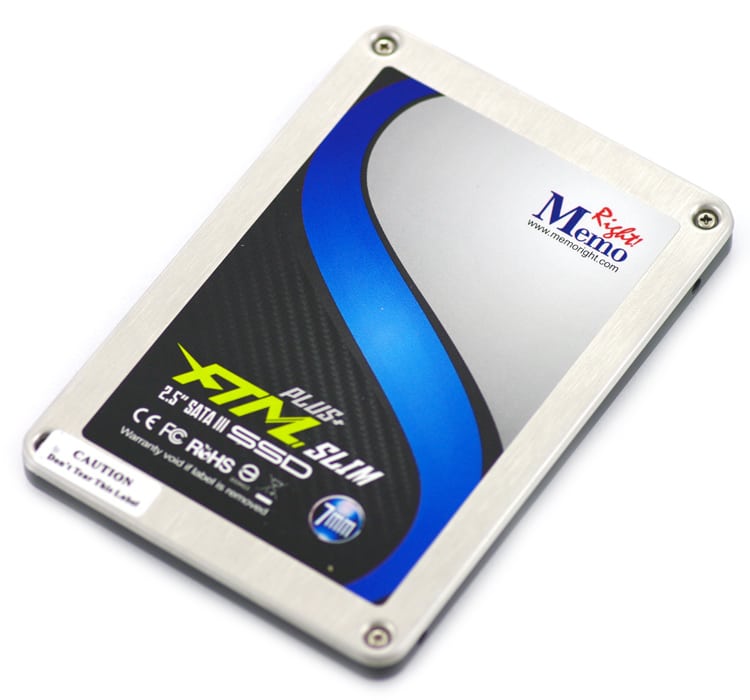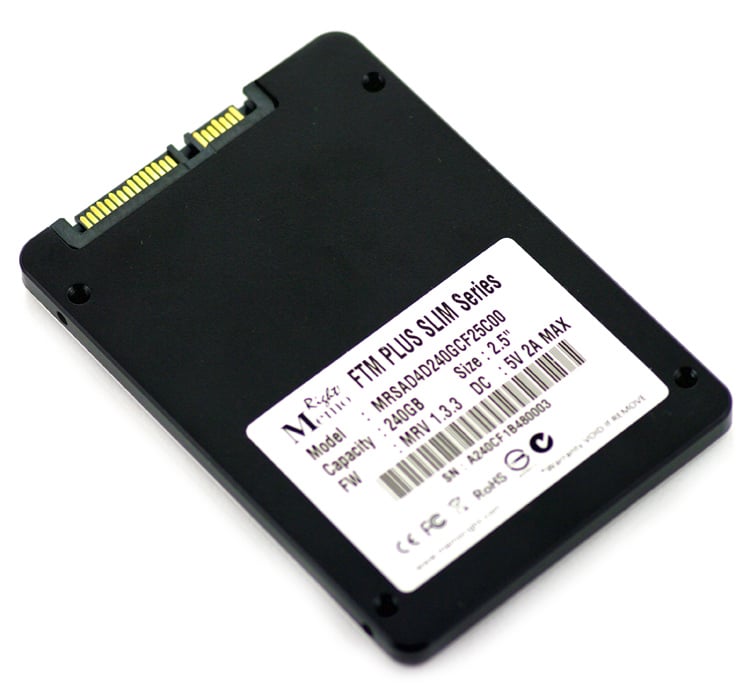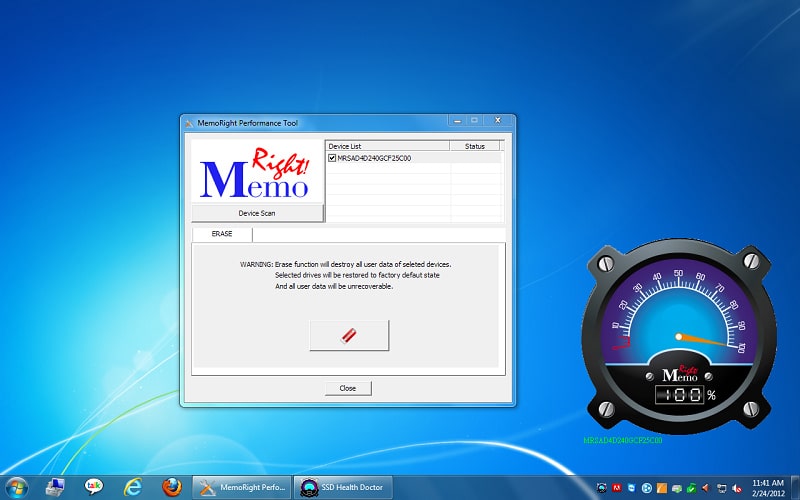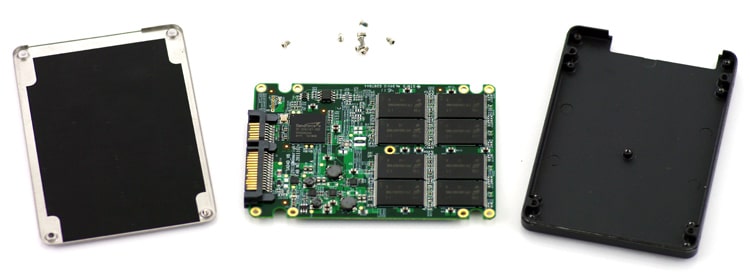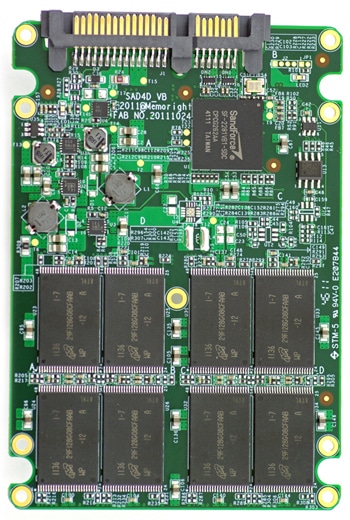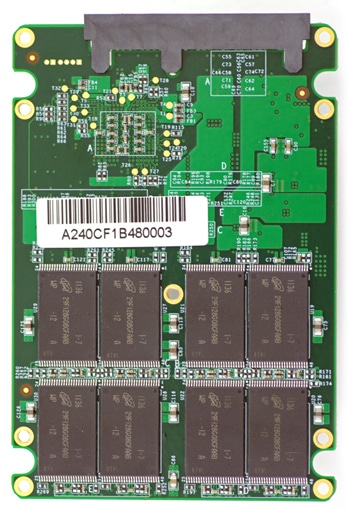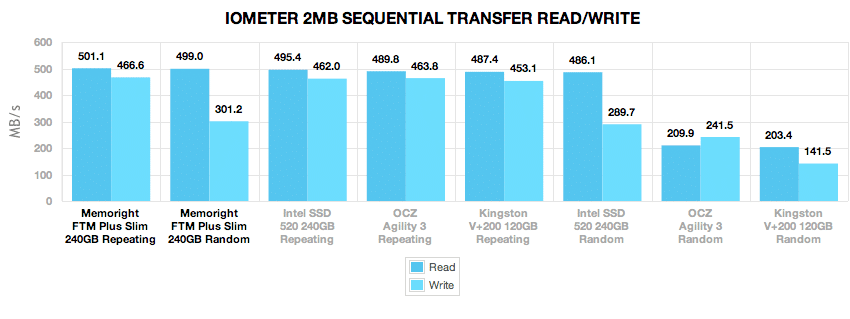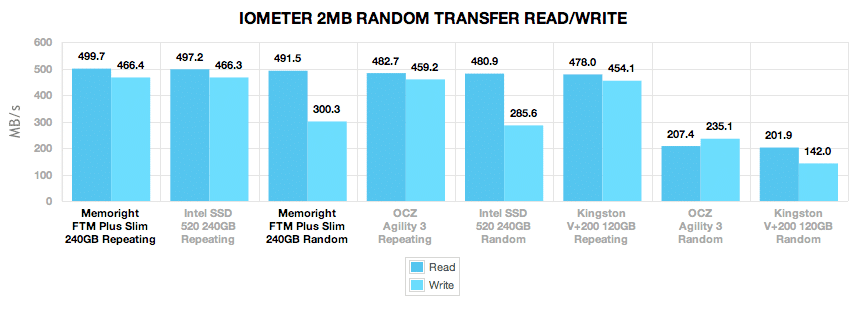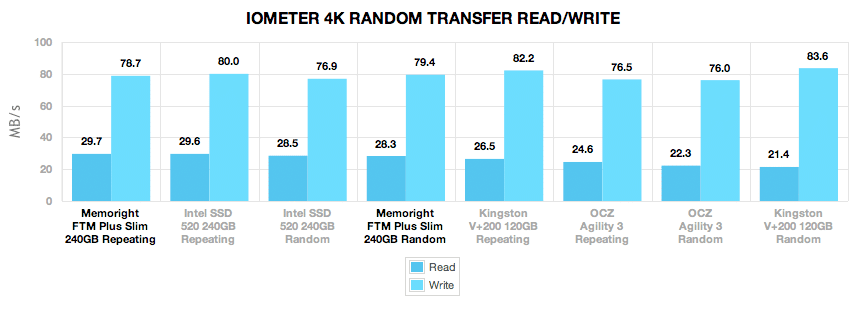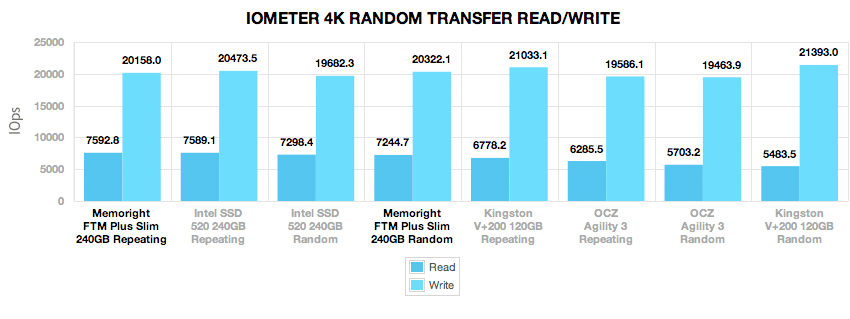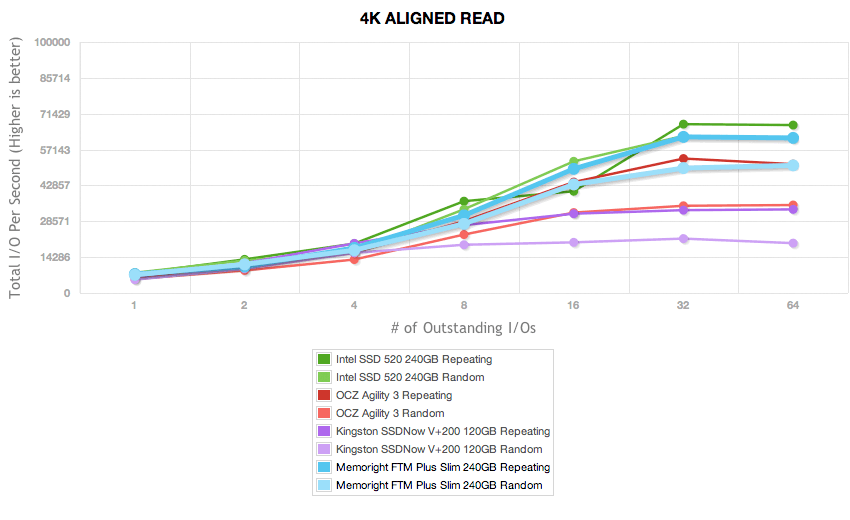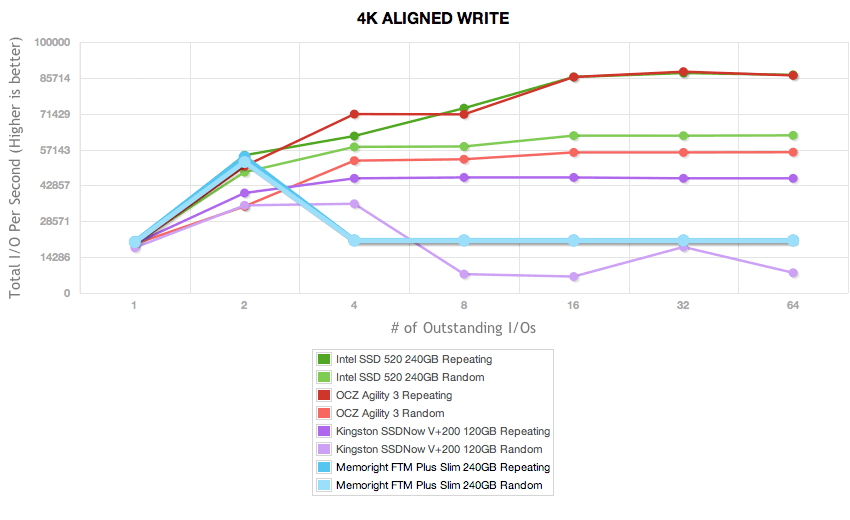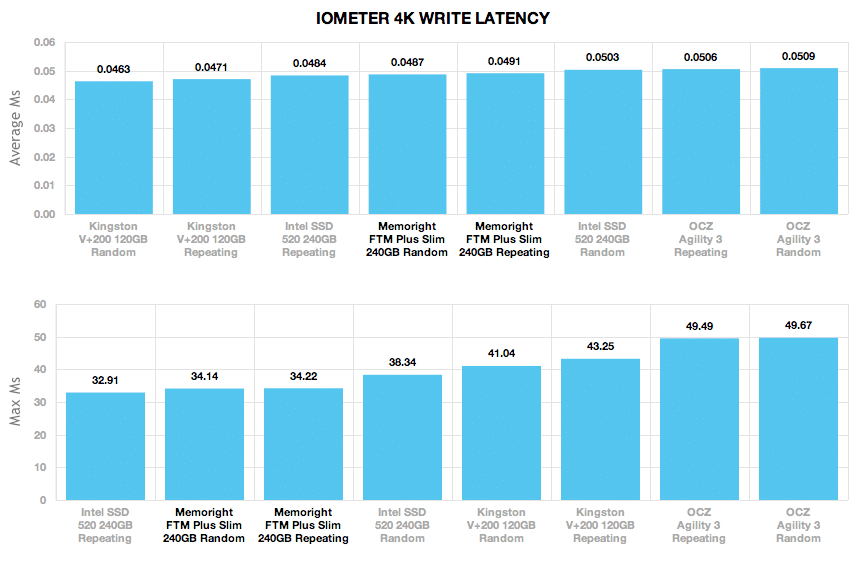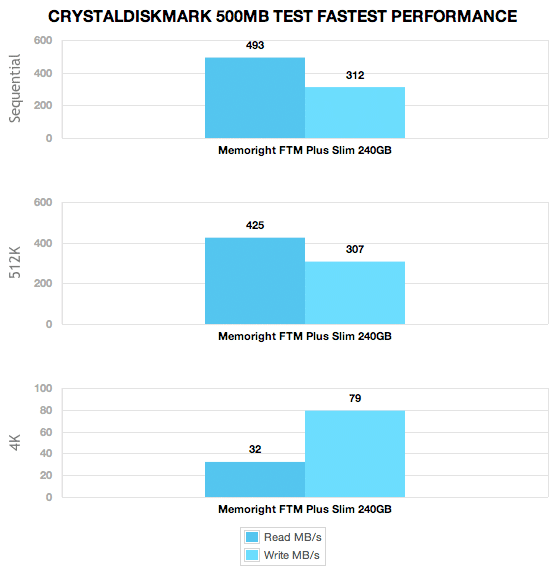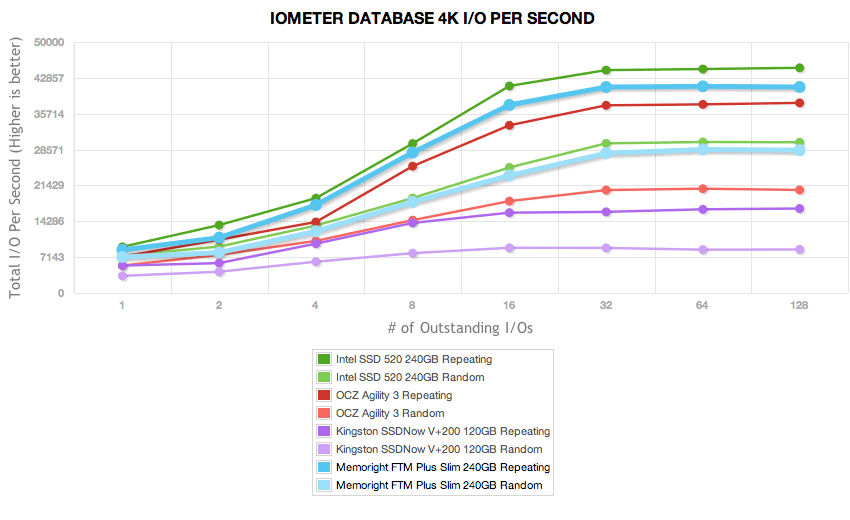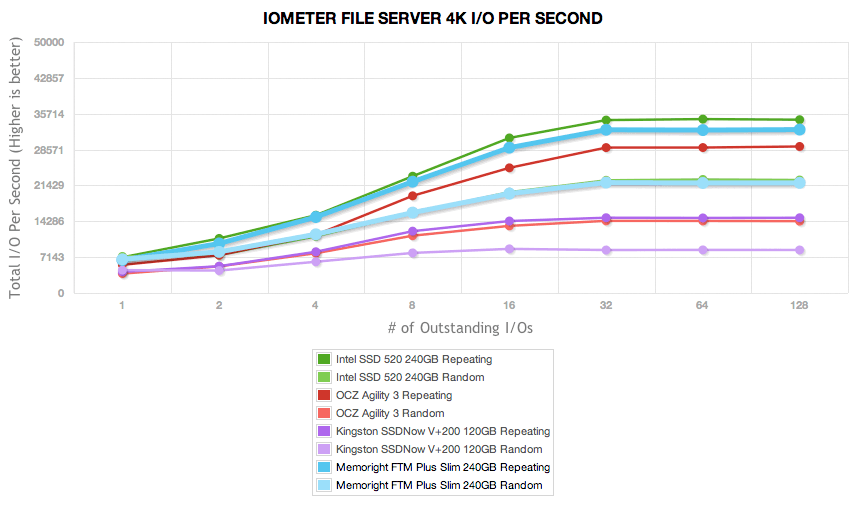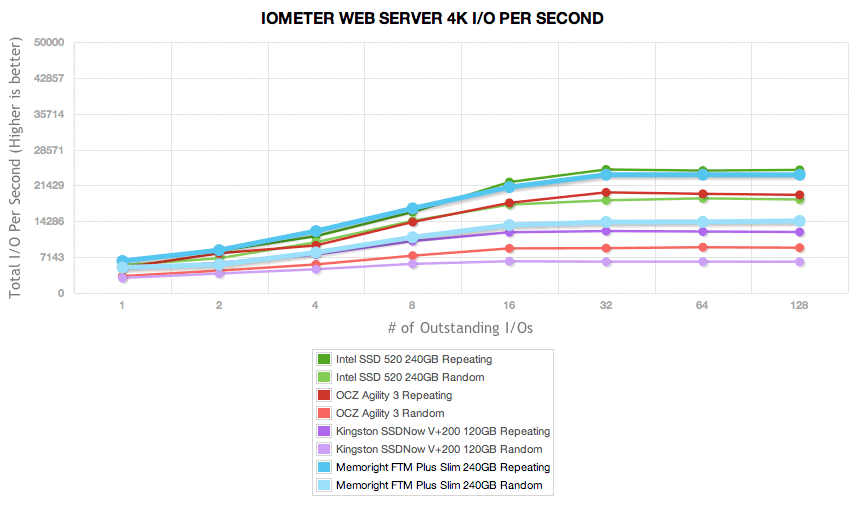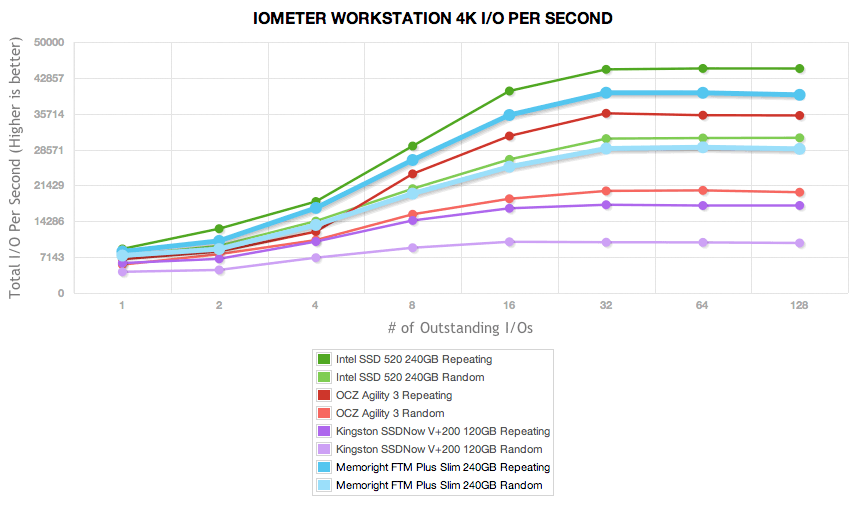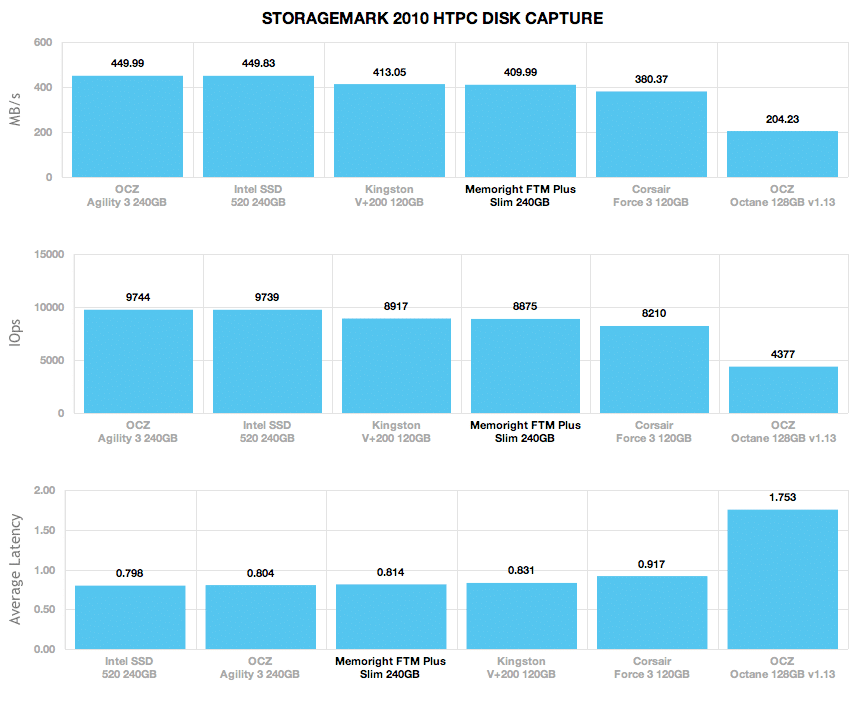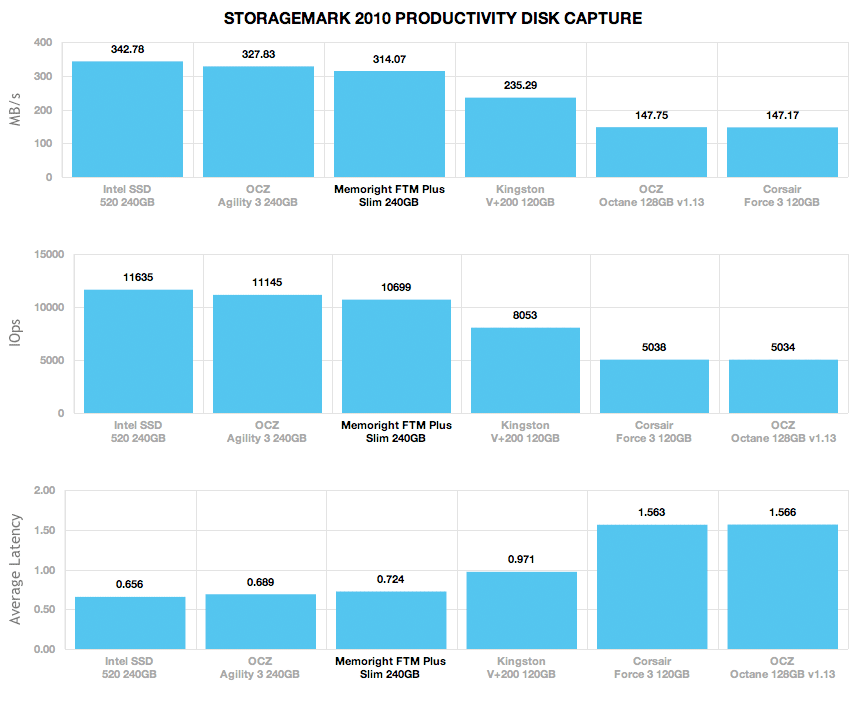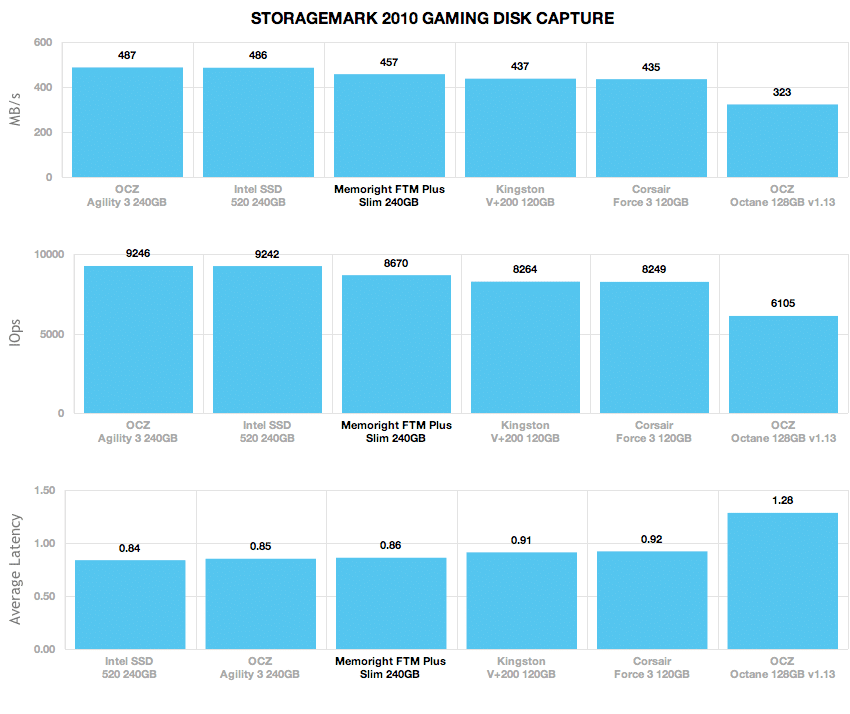
In response to the demand for ultra-thin notebook computing, the SSD industry at large has started transitioning to, or at least is offering additional SKUs, focused around the 7mm form factor. Memoright announced the FTM Slim in January, a 7mm client SSD featuring synchronous NAND, SandForce SF-2200 controller and SATA 6 Gb/s interface to deliver a reported 550 MB/s reads and 500 MB/s writes. For small form factor computing, such speeds are welcome, given with miniaturization, we’re used to giving up on performance.
The FTM Plus Slim builds on Memoright’s portfolio of SSD’s which includes client, enterprise and industrial variations. The FTM Plus Slim, and the more rotund 9.5mm FTM Plus, sit squarely in the mainstream client SSD market. While the focus may be on the client, Memoright has included plenty of their enterprise features with built-in power management features that include voltage-stabilizing circuits which protects the drive from electric irregularities and electrostatic discharge. The FTM Plus also uses this technology to finish drive writes before shutting down due to loss of power.
Memoright offers the FTM Plus and Slim in 60GB, 120GB, 240GB and 480GB capacities. While not generally available in retail, interested parties may contact Memoright directly to find a reseller in their area.
Memright FTM Plus Slim Specs
- Capacities:
- 60GB
- 120GB
- 240GB
- 480GB
- SandForce SF-2281 controller
- Form Factor 2.5”, 7mm z-height
- Interface SATA III, 6Gbps
- Micron 25nm MLC Synchronous NAND
- Sequential Read/Write 550/500 MB/s
- IOPS Read/Write 55,000/50,000
- Operation Temperature – -20℃~+70℃ / 0℃~+70℃
- Anti – Shock Operation 50G
- Non-operation 1500G
- Anti – Vibration 10~2000Hz 16.4G
- Humidity 5%~95%
- Water Proof (Option) IP65
- MTBF – 1.2 million hours
- Over Voltage Protection
- Over Current Protection
- AES 256-bit encryption support
- Dimensions (mm) 100.18 x 69.93 x 7
- Firmware Version Reviewed – MRV1.3.3
Aesthetics
The Memoright FTM Plus Slim uses an all-metal case, featuring a cast alloy body and a stamped metal top cover. Compared to many SSDs on the market that use plastic body segments, this gives the FTM Plus Slim a very solid and rugged feel. Considering that the target market for this slim SSD is made up of thin and lightweight systems which can and will flex under certain circumstances, protecting the drive is an important consideration.
The side profile of the drive shows the smaller 7mm z-height. This size of drive is required for Intel Ultrabooks, and can also be found in many systems on the market today such as the Lenovo ThinkPad X220.
The front of the drive is rather basic, with a standard SATA power and data connection. No service pins are needed for updating the drive, as everything is handled through a software client.
To help users manage their SSD, Memoright includes two software tools. The first is a speed gauge that shows remaining drive life, using SMART data to create a useful SSD-life gauge. The second software package gives users a simple secure erase tool, something that comes in handy from time to time. While not the most robust software package available to SSD owners, it’s something, and more than many manufacturers provide.
Disassembly
The Memoright FTM Plus Slim is easy to take apart after breaking a warranty voiding sticker. With no user serviceable parts inside, there is no reason a buyer should ever need to open their SSD. The top cover is removed by unscrewing four small Phillips head screws at the corners. With the cover lifted away, you can see the back of the circuit board. To lift the PCB out of the bottom half of the case, you need to remove another five remaining screws that hold it in place.
The heart of the Memoright FTM Plus Slim is a SandForce SF-2281 processor using sixteen 16GB Micron Synchronous NAND pieces for storage.
You can also see the beefier power regulation components on the circuit board, which look more at home on an enterprise-grade SSD than they do a consumer product. These should help suppress most power blips incoming to the drive, under under most conditions, especially with a notebook that has its own battery, the drive should never seen to fully utilize.
Synthetic Benchmarks
The Memoright FTM Plus Slim uses Micron 25nm synchronous MLC NAND, a SandForce SF-2281 processor and SATA 6Gb/s interface; our review unit is the 240GB capacity. The comparables used in this review include the following SSDs: Intel SSD 520 (240GB, SF-2281, 25nm Synchronous NAND), OCZ Agility 3 (240GB, SF-2281, 25nm Asynchronous NAND), OCZ Octane (128GB, Indilinx Everest, 25nm Synchronous NAND), the Corsair Force Series 3 (120GB, SF-2281, 25nm Asynchronous NAND) and the Kingston SSDNow V+200 (120GB, SF-2281, 25nm Asynchronous NAND). All drives are tested on the StorageReview client testing platform.
For the 240GB FTM Plus Slim capacity, Memoright lists a peak read speed of 550MB/s and a write speed of 500MB/s. To put these claims to the test, we used our 2MB sequential transfer test in IOMeter.
The Memoright FTM Plus Slim surprised us off the bat, coming in with faster sequential read and write speeds from both compressible and incompressible data than the Intel SSD 520.
Our next test looks at random 2MB transfers instead of sequential, showing what performance might look like during multiple file transfer requests.
The Memoright FTM Plus Slim still stayed in the lead, measuring 499.7MB/s read and 466MB/s write with compressible data. With incompressible data speeds slowed to 491.5MB/s read and 300.3MB/s write.
Moving on to even smaller transfer request sizes, our next section looks at random 4K read and write performance at a queue depth of one, and later moves to expanded queue depth tests.
At lower queue depths the FTM Plus Slim excelled in our random 4K read and write tests. It against came out in front of the Intel SSD 520, measuring 7,592 IOPS random 4K read and 20,158 IOPS random 4K write.
In our expanded 4K random read and write tests, we look how well each drive performed with multithreaded access.
Under a higher load the Memoright FTM Plus Slim started to slip against the Intel SSD 520 at higher queue depths.
Under short 4K write workload used to measure the speed in 30 second intervals for each new queue depth, the FTM Plus Slim spiked at 54,000 IOPS and then leveled off at 21,000 IOPS for the remaining duration of the test.
In our 4K write latency test, which measures access times at a queue depth of 1, the Memoright FTM Plus Slim scored well with average response times of 0.0487ms with incompressible data and 0.0491ms with compressible data. Peak latency times were also very good, measuring 34.14ms and 34.22ms for randomized and repeating respectively.
Using CrystalDiskMark with randomized data, we noted similar read and write speeds as what we found with our incompressible IOMeter testing.
Our last group of consumer IOMeter synthetic benchmarks looks at mixed-load server profiles including Database, Workstation, File Server, and Webserver. In this group the Memoright FTM Plus Slim performed very well, only being outpaced by the Intel SSD 520 at higher queue depths.
Real-World Benchmarks
One thing we try to focus on with our reviews is how any given drive might perform under real-world conditions. For the average user, trying to translate random 4K write speeds into an everyday situation can be difficult. It helps when comparing drives in every setting possible, but it doesn’t exactly work out into faster everyday usage or better game loading times. For this reason we turned to our StorageMark 2010 traces, which include HTPC, Productivity, and Gaming traces to help readers find out how a drive might rank under their conditions.
The first real-life test is our HTPC scenario. In this test we include: playing one 720P HD movie in Media Player Classic, one 480P SD movie playing in VLC, three movies downloading simultaneously through iTunes, and one 1080i HDTV stream being recorded through Windows Media Center over a 15 minute period. Higher IOps and MB/s rates with lower latency times are preferred. In this trace we recorded 2,986MB being written to the drive and 1,924MB being read.
In our HTPC scenario the Memoright FTM Plus Slim measured an average speed of 410MB/s ove the duration of our trace, compared to 449MB/s from the Intel SSD 520 and OCZ Agility 3.
Our second real-life test covers disk activity in a productivity scenario. For all intents and purposes this test shows drive performance under normal daily activity for most users. This test includes: a three hour period operating in an office productivity environment with 32-bit Vista running Outlook 2007 connected to an Exchange server, web browsing using Chrome and IE8, editing files within Office 2007, viewing PDFs in Adobe Reader, and an hour of local music playback with two hours of additional online music via Pandora. In this trace we recorded 4,830MB being written to the drive and 2,758MB being read.
In our productivity trace the FTM Plus Slim measured 314MB/s average, compared to 342MB/s from the Intel SSD 520 or 327MB/s from the OCZ Agility 3.
Our third real-life test covers disk activity in a gaming environment. Unlike the HTPC or Productivity trace, this one relies heavily on the read performance of a drive. To give a simple breakdown of read/write percentages, the HTPC test is 64% write, 36% read, the Productivity test is 59% write and 41% read, while the gaming trace is 6% write and 94% read. The test consists of a Windows 7 Ultimate 64-bit system pre-configured with Steam, with Grand Theft Auto 4, Left 4 Dead 2, and Mass Effect 2 already downloaded and installed. The trace captures the heavy read activity of each game loading from the start, as well as textures as the game progresses. In this trace we recorded 426MB being written to the drive and 7,235MB being read.
In the read-heavy Gaming trace the Memoright FTM Plus Slim measured an average speed of 457MB/s over the duration of the test.
Power
Applying the same read and write profiles that we performed at the beginning of this review, we measure the power used by the SSD during these read or write profiles. SandForce SSDs heavily rely on compression for faster speeds and less write amplification, as a result we measure power with both compressible and incompressible data.
The peak amount of power we recorded from the FTM Plus Slim was during a sequential 2MB write activity using incompressible data. During that test we measured an average power value of 4.16 watts, which dropped to 2.24 watts with compressible data. Read activity measured between 1.86 watts for sequential activity and 19.4 watts for random 4K read activity. Idle power was a low 0.65 watts.
Conclusion
For a mainstream SandForce SSD, the Memoright FTM Plus Slim did well across the board. In some cases it actually bested the Intel 520, which previously reigned supreme with the Vertex 3 Max IOPS in most of our benchmarks. The FTM Plus posted industry leading scores in our 2MB and 4K random and repeating tests with repeating data. The FTM Plus Slim also performed well in our traces, although not as chart smashing as it did in our synthetic benchmarks. On the power front, measurements came in light with the drive sipping only 0.65 watts at idle, great for its Ultrabook target market.
The FTM Plus Slim gave back some of those gains when it comes to sustained random writes, falling well behind other same-capacity SandForce drives in the 4K random write tests where performance leveled off at 21,000 IOPS a minute after the test began. For a short period of time, it did burst up to 54,000 IOPS though.
While billed as a client drive, it’s most likely that the FTM Plus Slim will find use inside workstations within the enterprise. With Memoright’s additional power protection, users with critical data that demand high integrity can feel good about the drive’s behavior with odd power fluxuations or in the event of unexpected shutdown. For extreme computing, there’s even a waterproof option, great for those submersible scientific types. Overall in the 7mm tall SSD market, the Memoright FTM Plus Slim packs a lot of punch in a small package.
Pros
- Surpasses Intel SSD 520 in large-block sequential read and write tests
- Strong performance in our mixed workload benchmarks
- Lower power consumption
Cons
- Fell back in our ramped 4K random write test
Bottom Line
The Memoright FTM Plus Slim offers very good performance in a client drive, while coupling power management features that are generally only seen in enterprise grade SSDs. The net result is a drive that should excel in workstation uses and other light enterprise duty.

